As many people know, Cambodia’s country side is still littered with hundreds of thousands of landmines. This was laid during the Khmer Rouge regime, and also the Vietnam war.
These impersonal killing devices, that costs $5 to plant, and $500 to find and remove, is killing long after the war ended. And they are not killing terrorists or military units, but local farmers and kids.
Many demining groups have been established with help from prominent figures, with Princess Diana a prime example. However, even with the best efforts, it is estimated that it will still take 100 years to clear Cambodia of mines.

Unexploded bombs dropped on Cambodia on display outside the Ladmine museum.
Landmines, or mines, comes in a bunch of different sizes and designs, each one developed for a certain purpose.

Different landmines on display.
Each landmine have a different charge (explosive power), and different way of activating. Most are activated when a pressure is applied, then removed. Like when you step on it then off again. Others have pull levers. The weight that activates it also differs. For instance, an anti tank mine is normally about 500 kg to activate, where smaller electronic land mines can activate on 3 kg. these small mines are normally only used to maim. They will blow your leg off, but not kill you.
This is perfect for booby traps. For when medics come to help you, snipers can kill them. The small land mine can also be placed underneath a larger anti tank mine. So if a deminer takes the mine out, he activates the smaller mine and gets blown up. For this reason, mines are no longer removed. But when found, they are marked then blown up with a small charge.
Demining is done by finding out where landmines are. This can be from information from ex soldiers that know where landmines are, villagers that have lost people from mines or have seen one in the ground (rain can wash them out.)
Deminers then go and set up grids around the field. Using protection gear and special detection units, they look for mines. However, many smaller plastic bodied mines do not always show up on the equipment, and deminer will probe the ground with a stick. A deminer can do around 50 to 100 sq meters a day. A minefield however, can be thousands of sq meters. Ones a mine is found, it is blown up, and the location added to the local minefield database. When an area is cleared, it is marked safe, and added to the international and local minefield database.
Sadly, due to the lack of cooperation from many governments, unwilling to give data on where their troops planted mines, (for then they have to admit just how many mines they planted), one of the most frequent ways a minefield is found is when local kids step on one when visiting a noughbour or helping to farm rice on their farm.
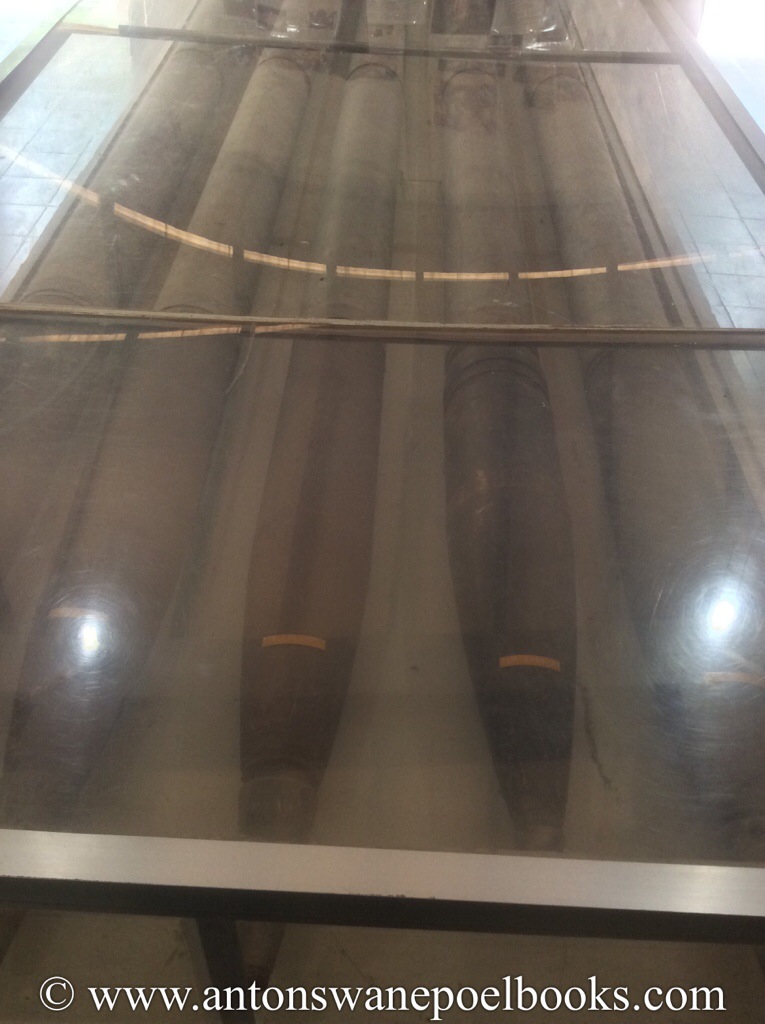
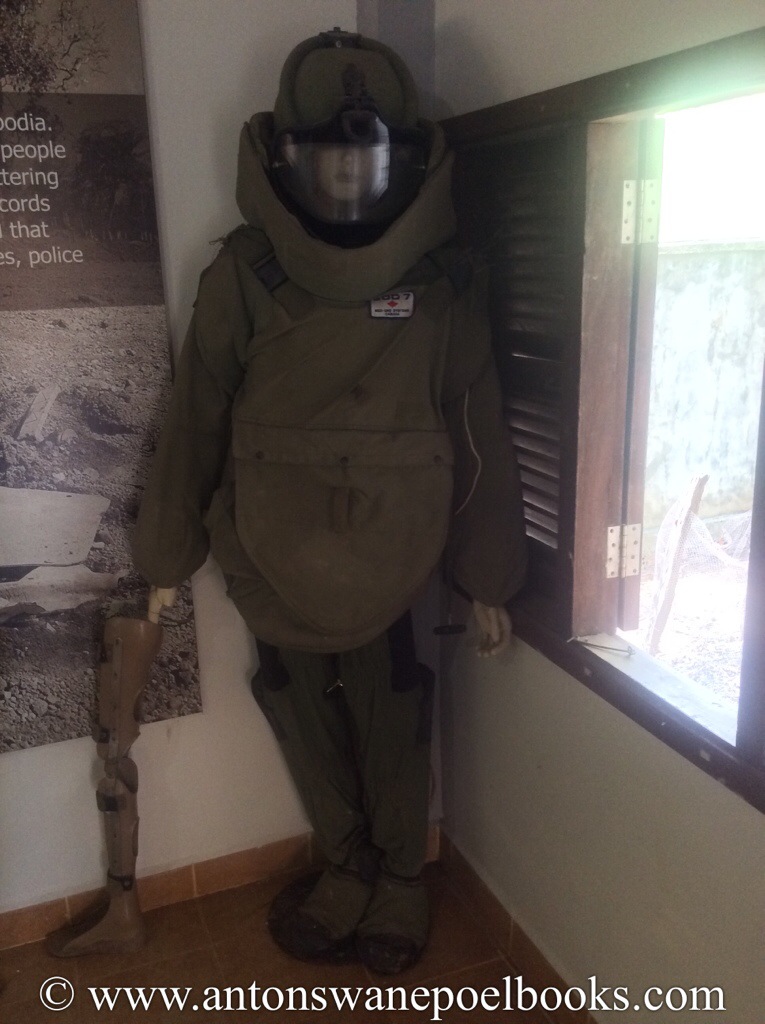

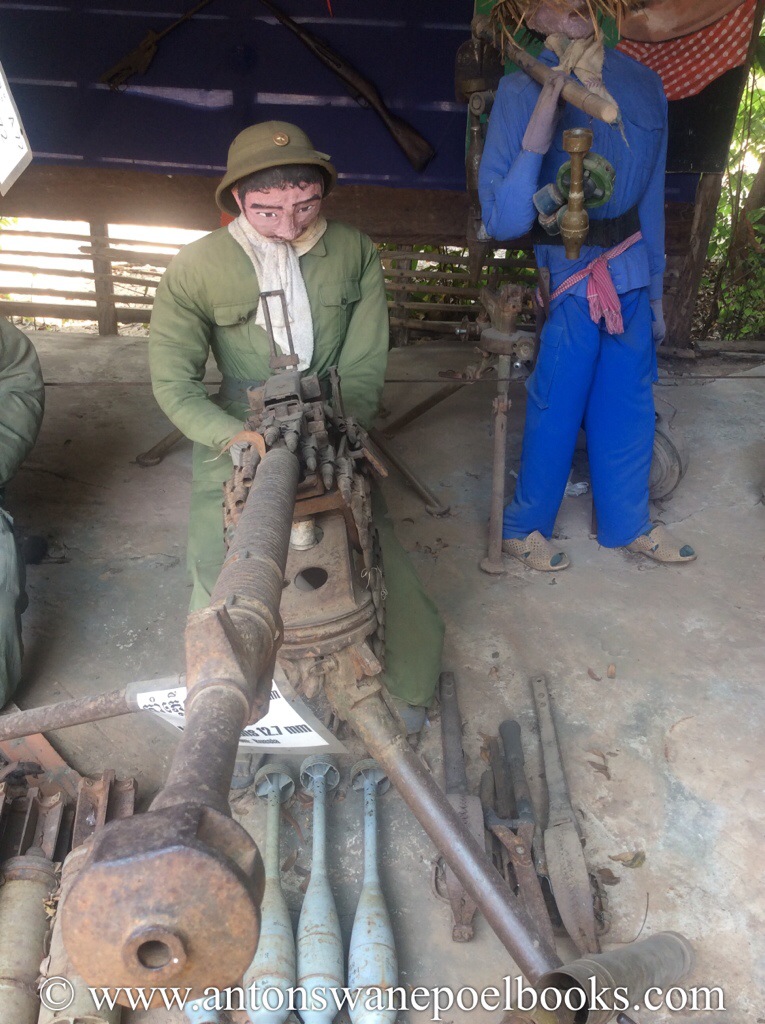
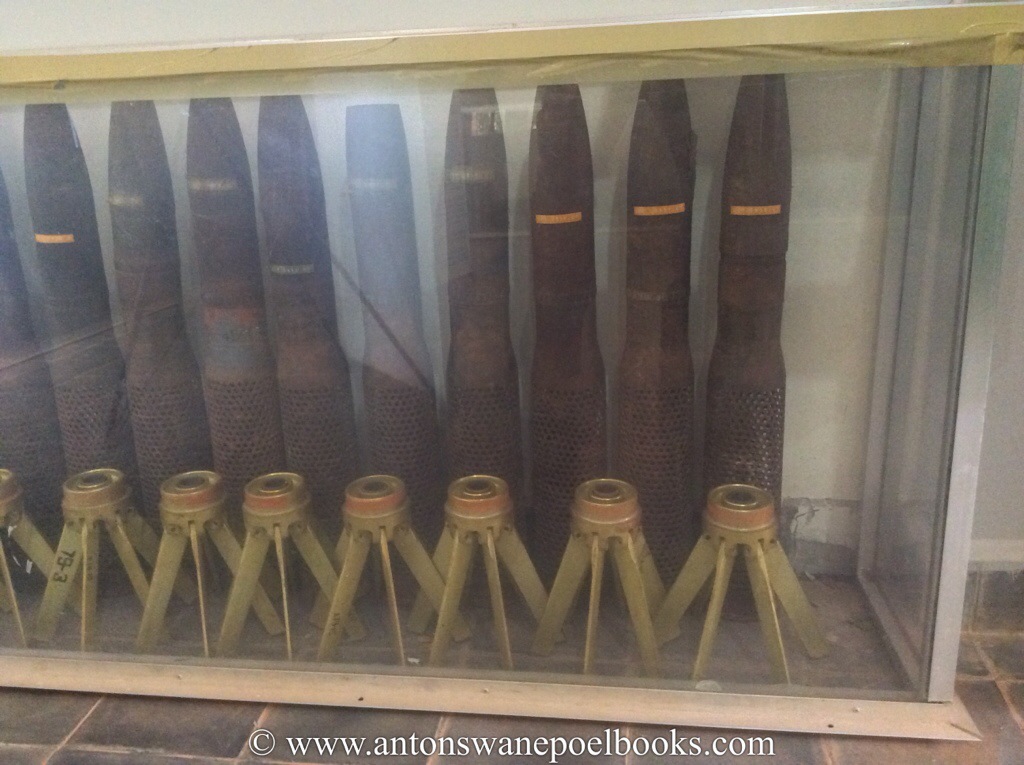
the parts from these bombs are used to make legs for those injured by the very same bomb. 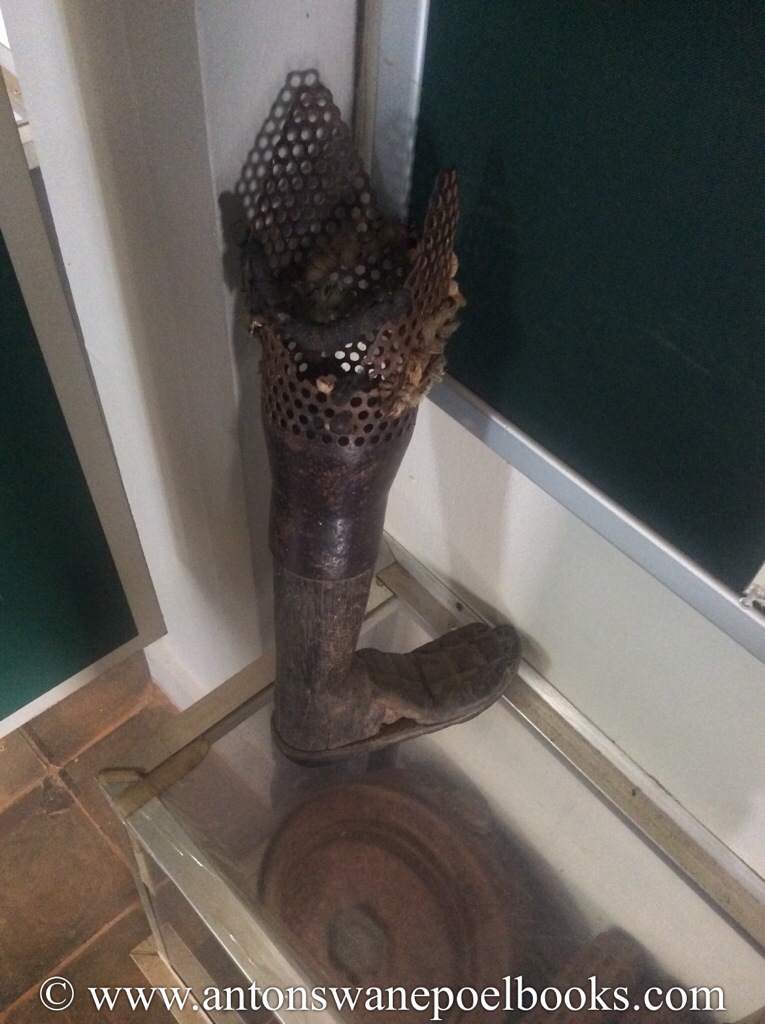
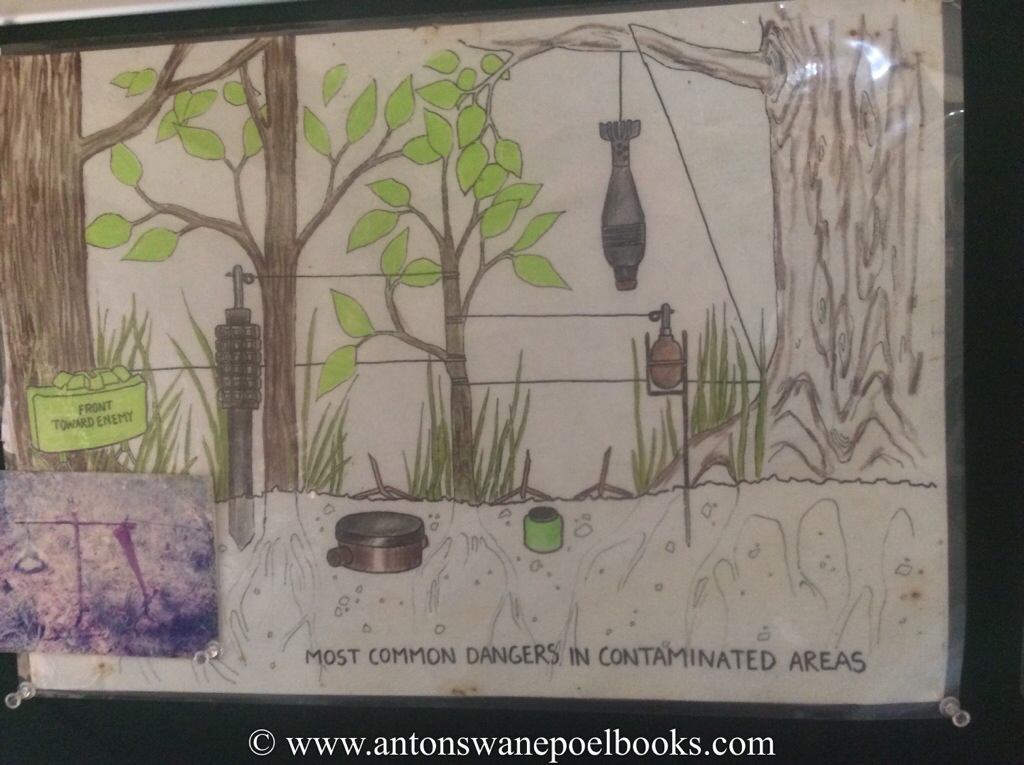
pictures showing how a trap was set. Some had bombs that would drop and take out an entire platoon, others just had spikes or logs come down and impale people.
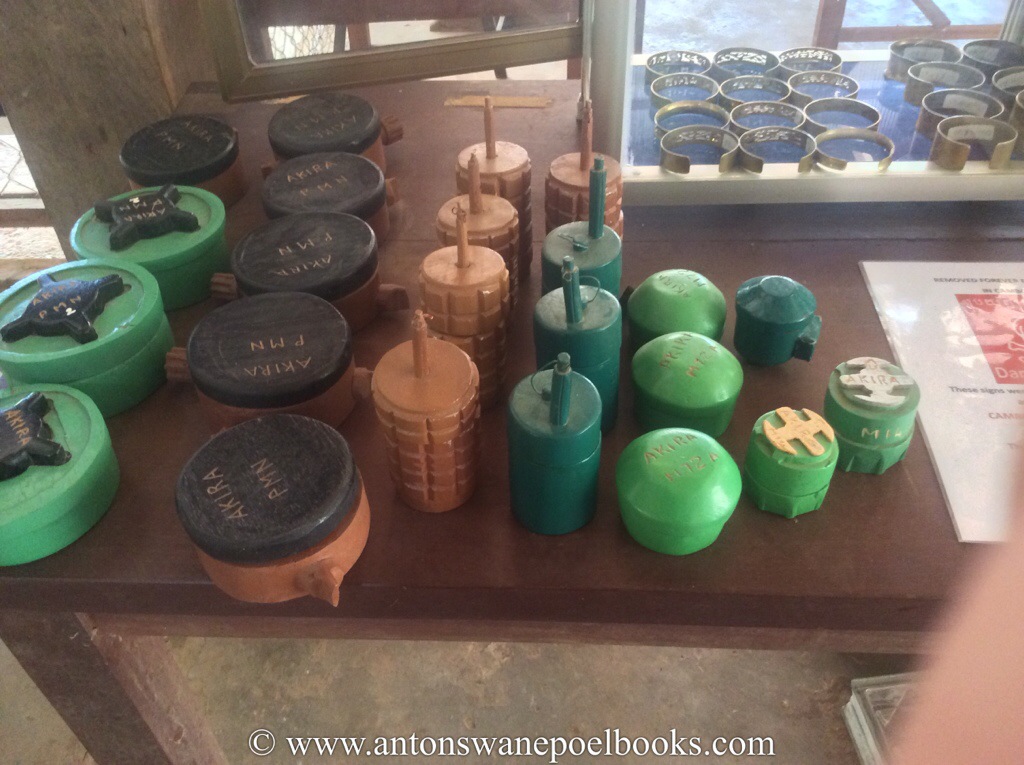
This is terrible. Depressing.
Unfortunately this is not even half of the story in what has been done to the Cambodian people. But, let’s move on and repair what is left.